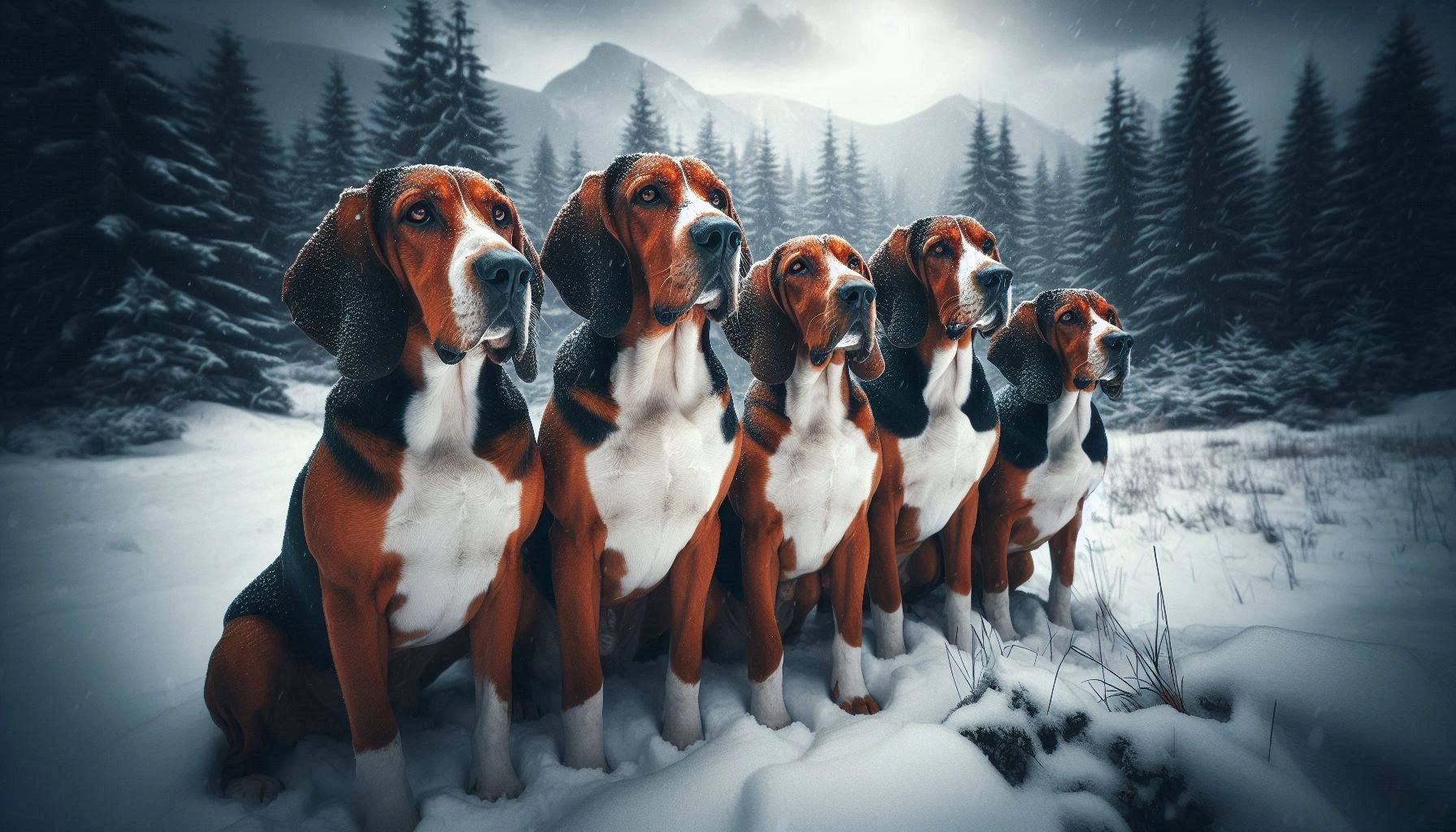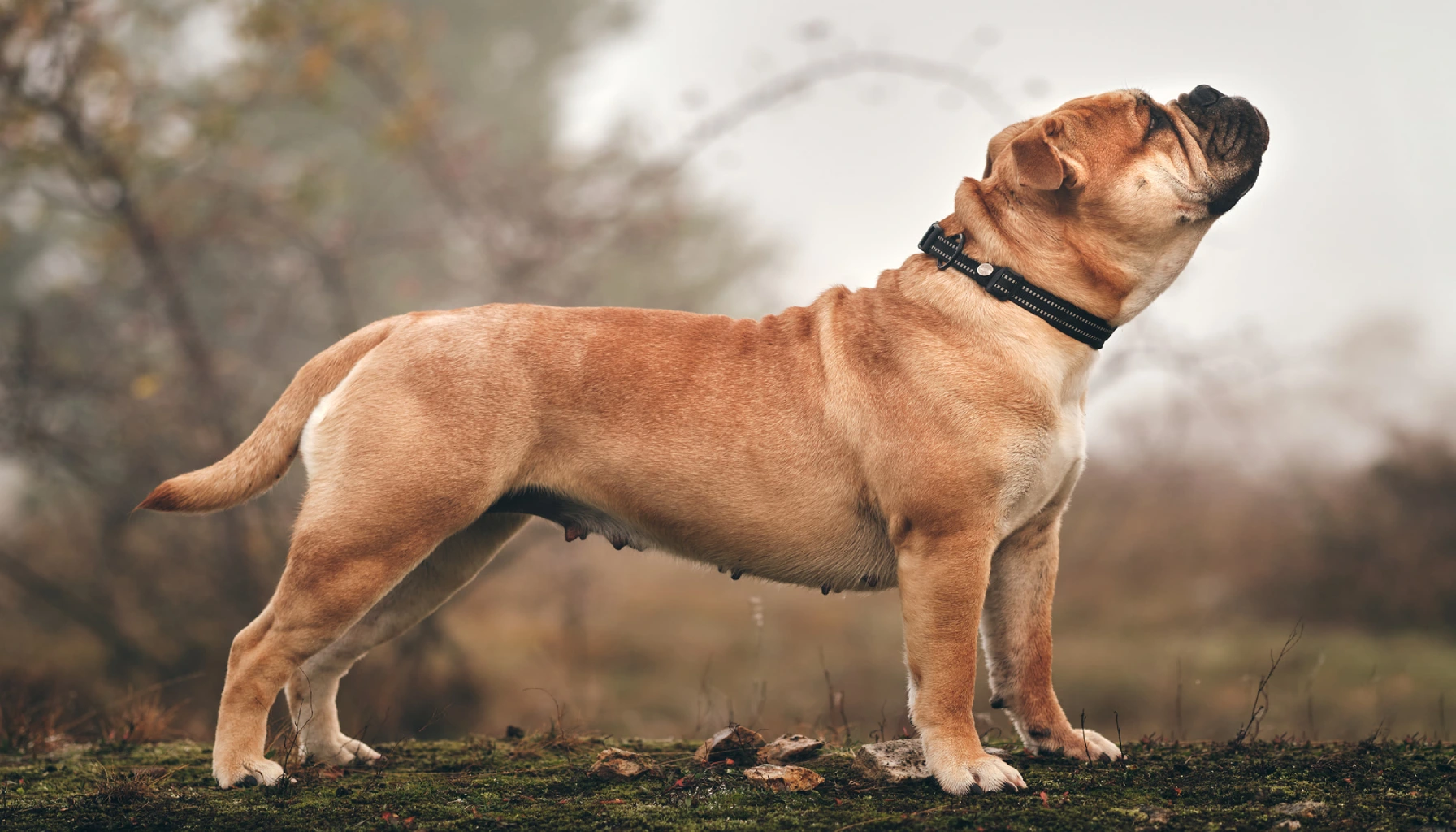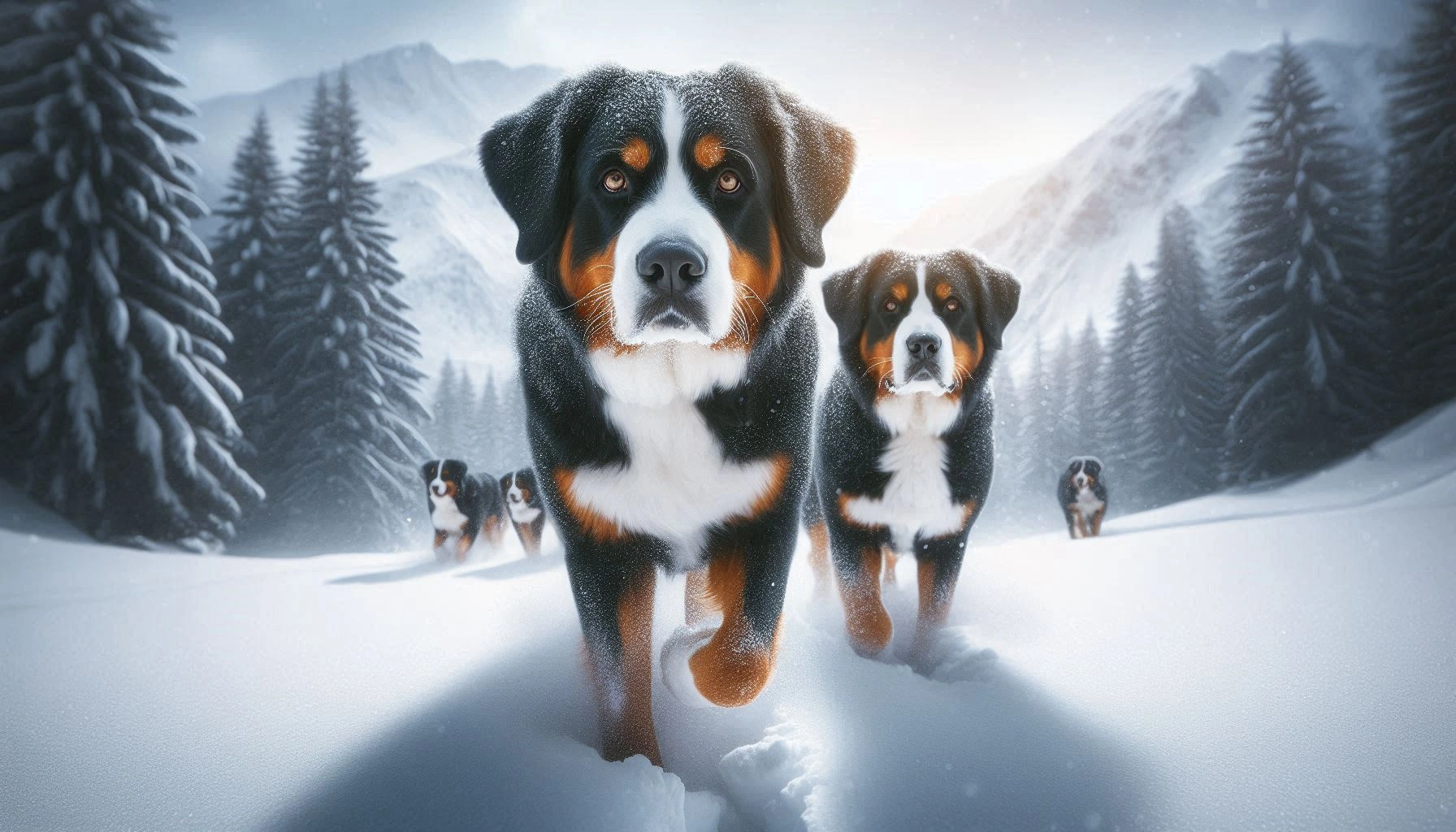Table of Contents
Greater Swiss Mountain Dog Breed
The Greater Swiss Mountain Dog is a majestic and robust breed known for its strength, loyalty, and striking appearance. Originating from the Swiss Alps, this breed is one of the oldest and largest of the Swiss mountain dogs, revered for its versatility as a working dog and its gentle nature as a family companion. With its tricolor coat and imposing yet friendly demeanor, the Greater Swiss Mountain Dog, often affectionately called the “Swissy,” has gained popularity among dog owners who value a breed that is both hardworking and affectionate. This guide will provide you with detailed insights into the Greater Swiss Mountain Dog, from its rich history to its care requirements, helping you determine if this breed is the perfect fit for your home.
Greater Swiss Mountain Dog History and Origin
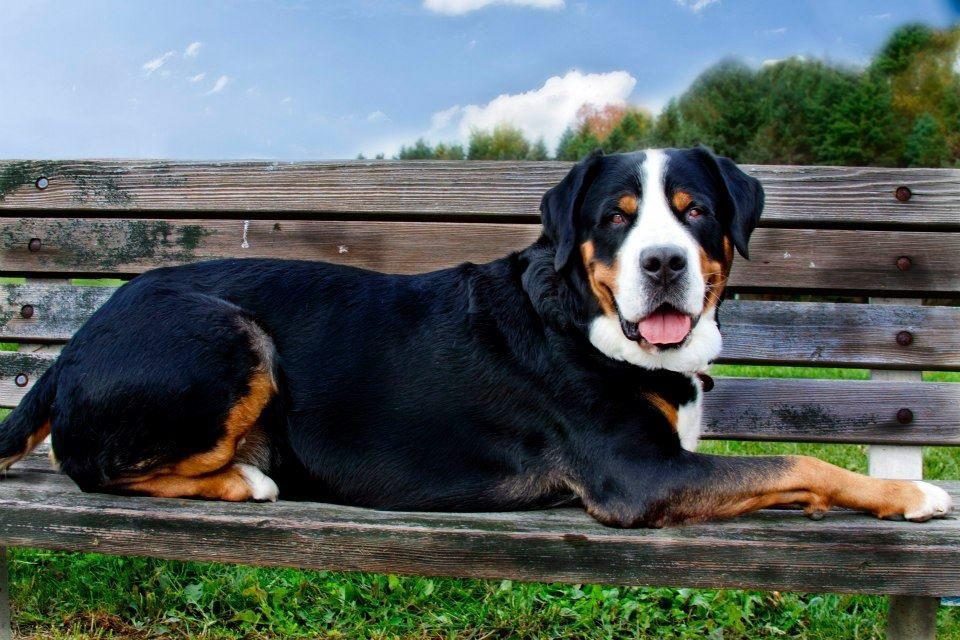
The Greater Swiss Mountain Dog has a storied history that dates back over 2,000 years. The breed is believed to have descended from large mastiff-type dogs brought to the Swiss Alps by Roman legions. These dogs were then crossbred with native dogs, resulting in the development of the Swiss Mountain Dogs, which were used primarily for herding, guarding, and pulling heavy carts laden with goods.
The Greater Swiss Mountain Dog, known in its native land as the “Grosser Schweizer Sennenhund,” was once the most common of the Swiss breeds, valued for its strength and endurance. However, with the advent of modern machinery, the breed’s numbers began to dwindle, leading to a decline in popularity by the early 20th century.
In 1908, the breed was “rediscovered” by Dr. Albert Heim, a Swiss geologist and dog breed historian, who played a pivotal role in reviving the breed. Thanks to his efforts, the Greater Swiss Mountain Dog gained recognition from the Swiss Kennel Club in 1910, and it has since seen a resurgence in popularity, both in Switzerland and abroad.
Greater Swiss Mountain Dog Physical Characteristics
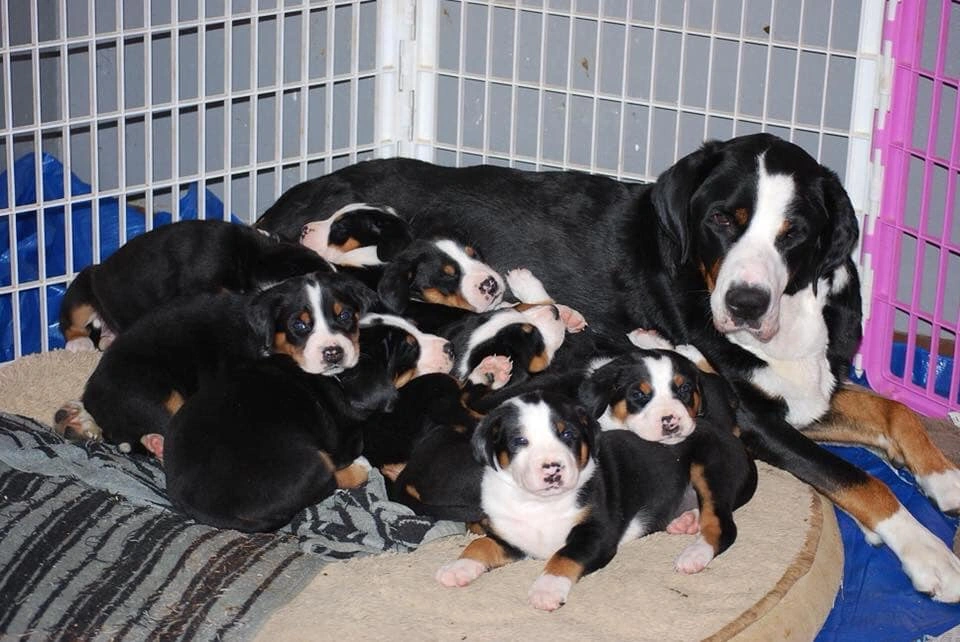
The Greater Swiss Mountain Dog is a large and powerful breed with a distinctive and attractive appearance. This breed is built for endurance and strength, making it well suited for various working tasks.
Size
- Height: Males typically stand between 25.5 to 28.5 inches at the shoulder, while females range from 23.5 to 27 inches.
- Weight: Males generally weigh between 105 to 140 pounds, and females weigh between 85 to 110 pounds.
Coat Type and Colors
The Greater Swiss Mountain Dog has a double coat consisting of a dense undercoat and a short, straight topcoat. This double coat provides protection against harsh weather, which is essential given the breed’s alpine origins. The coat comes in a striking tricolor pattern:
- Black: Forms the base color of the coat.
- Rust: Appears on the cheeks, above the eyes (giving a distinctive “eyebrow” appearance), and on the chest and legs.
- White: Found on the muzzle, a blaze running from the muzzle to the top of the head, chest, and the tip of the tail.
Distinctive Features
The Greater Swiss Mountain Dog has a large, broad head with a gentle, expressive face. Their eyes are medium sized and dark brown, exuding a friendly and intelligent expression. The breed’s ears are medium-sized, set high, and triangular in shape, hanging close to the head.
Temperament and Personality
The Greater Swiss Mountain Dog is known for its calm, loyal, and gentle nature, making it an excellent companion for families and individuals alike. Despite its large size, the breed is often described as “gentle giants” due to their friendly disposition.
Interaction with People and Children
Greater Swiss Mountain Dogs are incredibly devoted to their families. They are known for forming strong bonds with their owners and thrive on human interaction. The breed is typically very patient and gentle with children, making them an excellent choice for families. However, due to their size and strength, supervision is recommended when they are around small children to prevent accidental knocks or injuries.
Interaction with Other Animals
Greater Swiss Mountain Dogs generally get along well with other animals, particularly if they have been raised with them. Early socialization is key to ensuring that they are comfortable around other dogs and pets. Their herding instincts may lead them to try and “herd” smaller animals, but this behavior can be managed with proper training.
Health and Lifespan
The Greater Swiss Mountain Dog is a relatively healthy breed, but like all breeds, they are prone to certain health issues. Being a large breed, they have a slightly shorter lifespan, averaging between 8 to 11 years.
Common Health Issues
- Hip Dysplasia: A common condition in large breeds where the hip joint doesn’t fit properly into the hip socket, leading to arthritis and mobility issues.
- Elbow Dysplasia: Similar to hip dysplasia, this condition affects the elbow joint and can cause pain and lameness.
- Bloat (Gastric Torsion): A life-threatening condition where the stomach fills with gas and twists. Immediate veterinary attention is required if bloat is suspected.
- Osteochondritis Dissecans (OCD): A joint condition where cartilage doesn’t form properly, leading to lameness and pain.
- Entropion: A condition where the eyelid rolls inward, causing irritation to the eye.
Tips for Keeping Your Greater Swiss Mountain Dog Healthy
- Regular Vet Visits: Routine check ups can help catch health issues early.
- Weight Management: Maintain a healthy weight to reduce the risk of joint problems.
- Exercise: Provide regular, moderate exercise to keep them fit without overexertion.
- Quality Diet: Feed a balanced diet tailored to large breeds to support their health and growth.
Care and Grooming
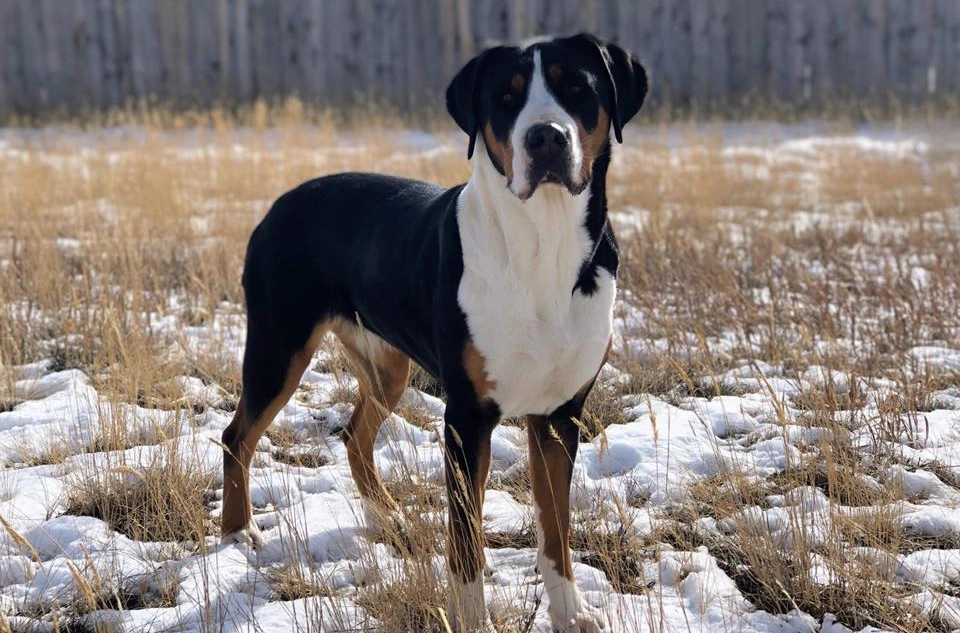
Caring for a Greater Swiss Mountain Dog requires a commitment to regular grooming, exercise, and attention to dietary needs.
Grooming Needs
- Brushing: The Swissy’s coat should be brushed weekly to remove loose hairs and keep the coat healthy. During shedding season, which happens twice a year, more frequent brushing is needed.
- Bathing: Bathe your dog as needed, typically every few months, or when they become particularly dirty.
- Nail Trimming: Keep their nails trimmed to prevent discomfort or injury.
- Ear Cleaning: Regularly check and clean their ears to prevent infections.
- Dental Care: Brush their teeth several times a week to maintain oral health.
Exercise Requirements
Greater Swiss Mountain Dogs are moderately active and need regular exercise to stay healthy and happy. Daily walks, combined with playtime or light jogging, will suffice. They enjoy activities that engage their mind and body, such as hiking, cart pulling, or obedience training.
Dietary Recommendations
Feed your Greater Swiss Mountain Dog a high quality diet formulated for large breeds. Be mindful of portion sizes to avoid overfeeding, which can lead to obesity and exacerbate joint problems. It’s advisable to feed them multiple smaller meals a day rather than one large meal to reduce the risk of bloat.
Training and Socialization
Training a Greater Swiss Mountain Dog can be a rewarding experience, but it requires patience and consistency. This breed is intelligent and eager to please but can be a bit stubborn.
Effective Training Tips
- Start Early: Begin training and socialization as early as possible.
- Positive Reinforcement: Use rewards such as treats, praise, and play to encourage good behavior.
- Consistency: Be consistent with commands and rules to avoid confusion.
- Socialization: Expose your Swissy to different people, animals, and environments from a young age to build confidence and reduce fearfulness.
Socialization Strategies
Early socialization is crucial for this breed. Introducing your Greater Swiss Mountain Dog to various environments, people, and other animals will help them develop into a well rounded and confident adult. Puppy classes and dog parks can be excellent places for socialization.
Suitability as a Family Pet
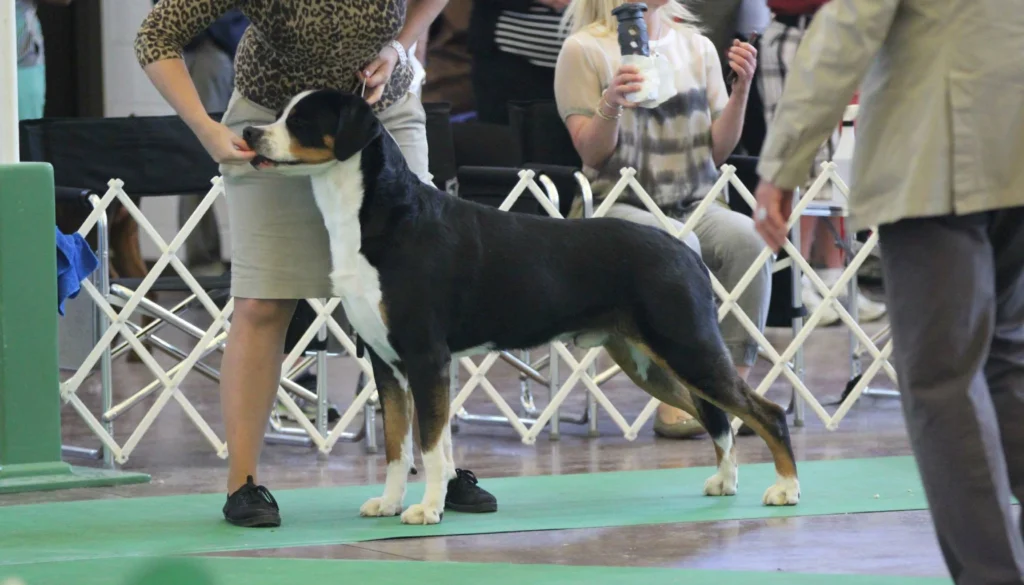
The Greater Swiss Mountain Dog is an excellent family pet, especially for families who appreciate a loyal, protective, and gentle giant. However, due to their size and energy levels, they are best suited for homes with space to accommodate their needs.
Living Environment Considerations
- Space: The Swissy thrives in homes with a yard where they can roam and play. They can adapt to apartment living if given sufficient exercise, but space to move around is preferable.
- Companionship: This breed loves being with its family and does not do well if left alone for long periods. They can become bored and destructive without adequate attention.
Energy Levels
Greater Swiss Mountain Dogs have moderate energy levels. They enjoy outdoor activities and need regular exercise but are also content to relax with their family indoors. They are not as hyperactive as some breeds, making them a good match for families looking for a balanced dog.
Fun Facts and Trivia
- Ancient Lineage: The Greater Swiss Mountain Dog is one of the oldest dog breeds, dating back over 2,000 years.
- Cart Pulling: Historically, these dogs were used to pull heavy carts filled with goods, earning them the nickname “poor man’s horse.”
- Rare Breed: Despite their long history, Greater Swiss Mountain Dogs remain relatively rare outside of Switzerland.
Similar Dog Breeds to Greater Swiss Mountain Dog

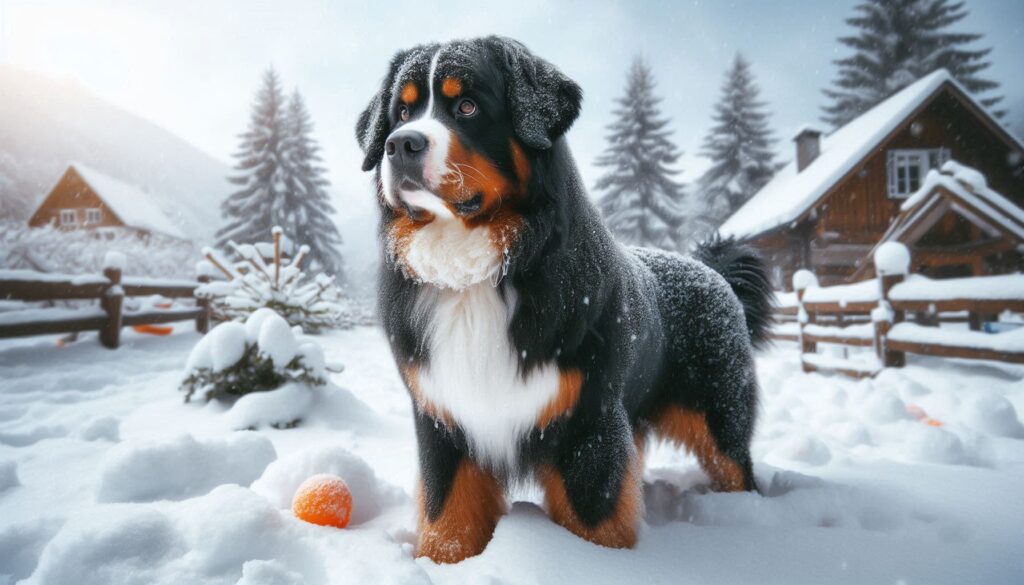
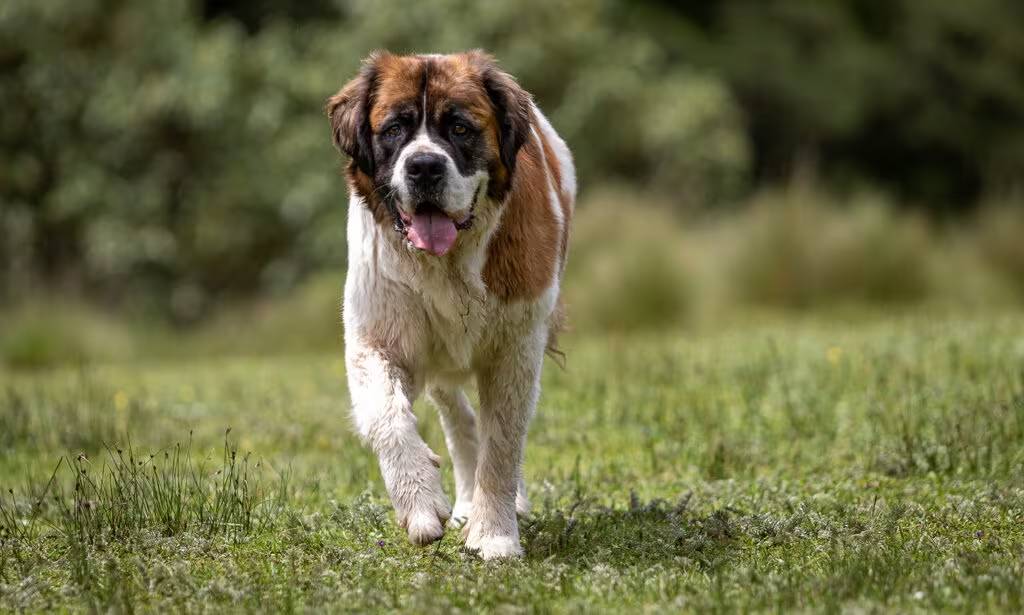
- Bernese Mountain Dog:
- Similar in appearance but with a longer coat, the Bernese Mountain Dog is another Swiss breed known for its gentle and affectionate nature. They are slightly smaller and often more popular due to their striking tricolor coat.
- Saint Bernard:
- Famous for their role as rescue dogs in the Alps, Saint Bernards are large, gentle giants like the Swissy. They are known for their friendly and patient temperament, making them great family dogs.
- Entlebucher Mountain Dog:
- The smallest of the Swiss mountain dogs, the Entlebucher is energetic and lively, with a strong herding instinct. They are excellent for active families and share the Swissy’s loyalty and protective nature.
Conclusion
The Greater Swiss Mountain Dog is a breed that embodies strength, loyalty, and gentleness. Whether as a working dog or a family companion, the Swissy is a versatile breed that brings both protection and affection to its home. With proper training, care, and socialization, this breed can be a perfect fit for families who have the space and time to dedicate to their needs. If you’re considering adding a Greater Swiss Mountain Dog to your family, take the time to learn more about this breed’s unique characteristics and see if they match your lifestyle.
FAQs
Is the Greater Swiss Mountain Dog a dangerous dog?
No, the Greater Swiss Mountain Dog is not inherently dangerous. They are known for their gentle and friendly nature, especially towards their family. Like any large breed, they need proper training and socialization to ensure they are well behaved, but they are not aggressive by nature.
Is the Greater Swiss Mountain Dog the best guard dog to protect my family?
The Greater Swiss Mountain Dog can be an excellent guard dog due to their protective instincts and alert nature. While they are not as aggressive as some other guard breeds, their size and deep bark can be a strong deterrent to intruders. However, their friendly and gentle disposition means they balance protection with affection, making them great family companions.

